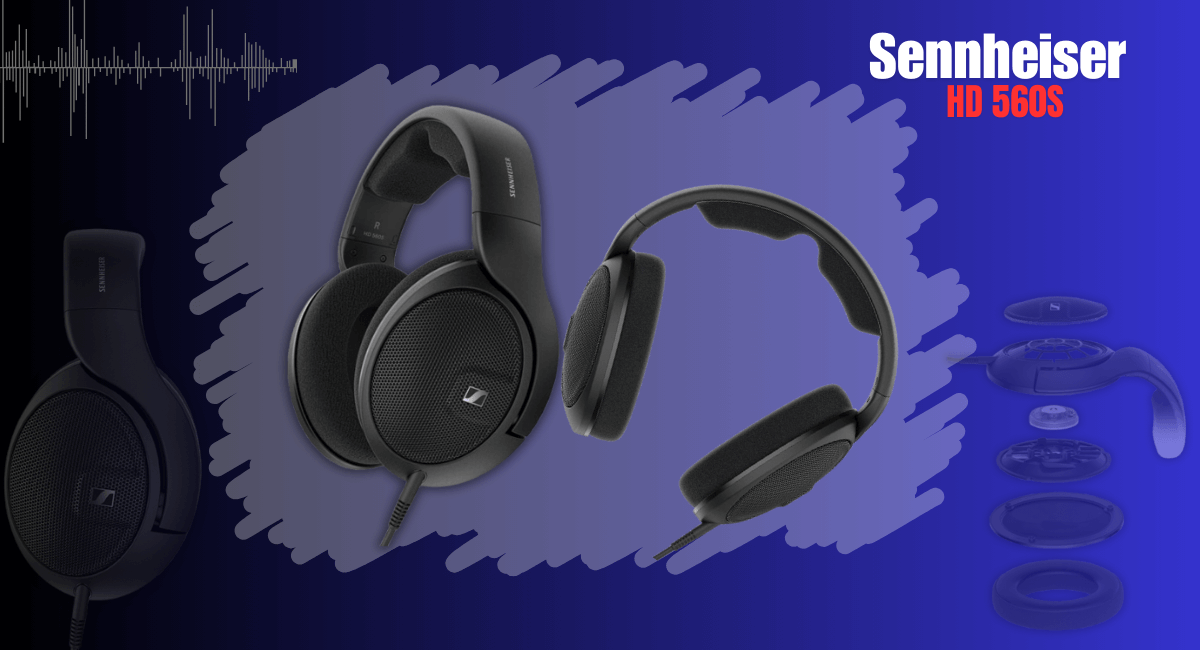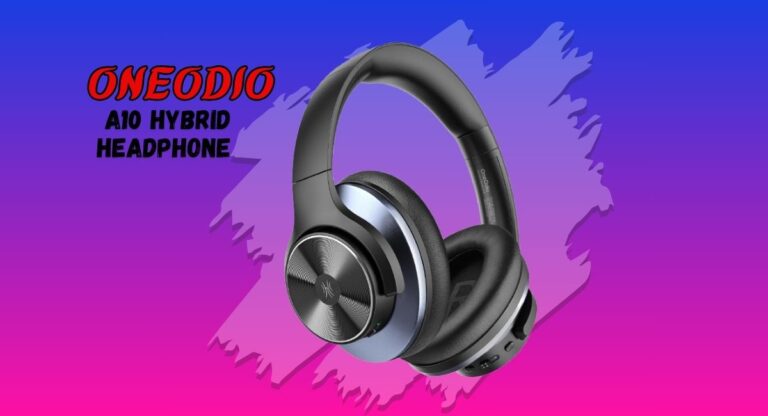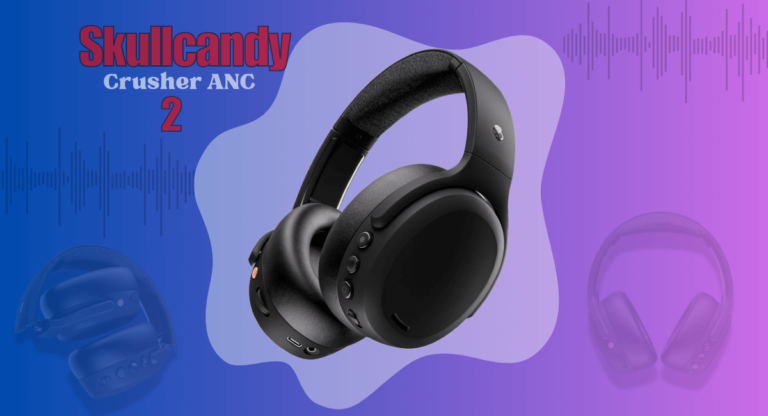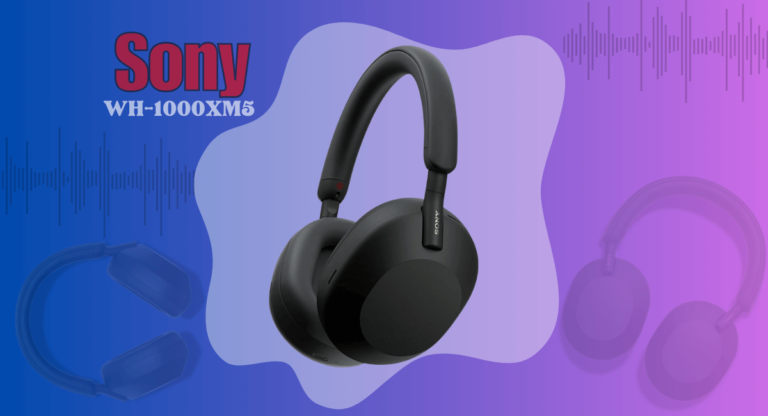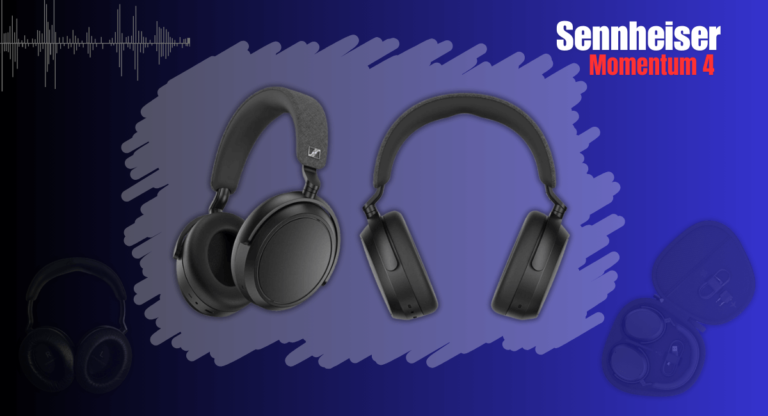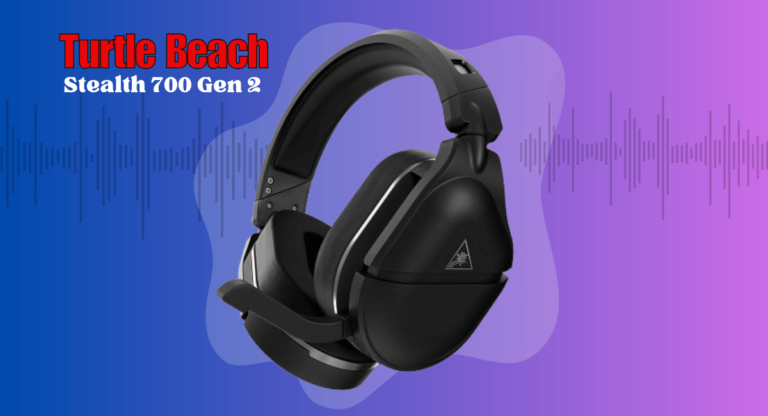Sennheiser HD 560S Review
The Sennheiser HD 560S is an open-back wired headphone that is dedicated to true audiophiles who expect a fidelity of sound that is unbeatable. I have used the Sennheiser headphones for a reasonable amount of time and I fully appreciate that they have lived to the expectation that the name Sennheiser couture is all about. Through their lightweight structure and sound balance, the headphones are good for lengthy use and provide a high degree of immersion.
On the downside, they do come with a few disadvantages especially when compared to other portable devices with noise cancellation features. In this particular review, I will focus on my practical use of Sennheiser HD 560S, discussing various aspects of these headphones so that readers can evaluate whether they suit their applications or not.
Reasons to Buy
- Sound quality
- Removable cable
- Price
- Comfort
Reasons to Avoid
- Dongle
- Mainly plastic body
- Long cable
Design & Aesthetics
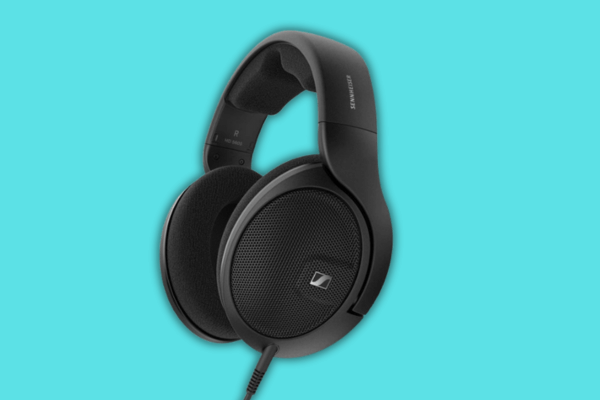
Design and aesthetics are very simple and discreet in the case of the Sennheiser HD 560S. Or if you have seen the other models in the series HD5 like HD 598 and HD 599 you will also have some things. The 590 models also had slight cosmetic changes like the swept back ear cup mounts which slims the ears. This is an additional feature but more simply enhances the aesthetic beauty and the comfort of the closed back.
The pair of headphones is styled as over-ear headphones, instead of being slung on the ear. Hence the sound has a more open and natural character. They appear to be undisturbed by subject matter with a dark matte covering and some text and light graphics decoration. It is less about seeking attention and more of providing crystal clear sound quality.
However, the same does not reflect on the comfort in control that the HD 560S has. There are neither volume dials nor play/pause buttons so you’ll be dependent on your audio source for any volume control. And while at first sight this may appear to be a disadvantage for others, it is obvious to some that Sennheiser intended these specific models more to quality and less to peculiarities than simple extras.
The design is unadorned, user friendly and practical – perfect for music lovers focused on quality rather than the trappings.
Materials and Build Quality
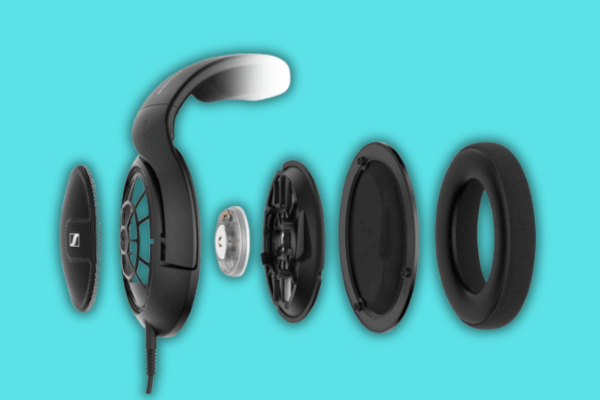
In terms of build quality, the Sennheiser HD 560S is a product about which I had mixed feelings following a couple of tests in the real world. The headband and the ear cups, on the other hand, are made from dense matte plastic material that’s both tough and light. At least I found out that the latter matte finish helps to keep them clean from all the muck one usually gets on the glossy finish such as fingerprints. Wearing them for extended sessions wasn’t a problem either because they aren’t that hefty and the overall shape is quite nice as well.
What I particularly appreciated was the fact that the audio cable comes off. This is such a nice little feature because let’s be honest here, cables get ruined or broken with too much usage. Although many people would consider it hard to justify the cost of replacing the headsets as it would get me the option of changing the cables and it surely helps in the lifespan of the product.
However, not everyone feels quite that sturdy like the Sennheiser Momentum 4. The yokes and hinges of the ear cup, which are quite critical from the build perspective, felt a bit too flimsy to me during my tests. The hinges – more so than the rest of the construction – don’t seem to be as heavily built and give the impression that constant use may not agree with them. At the same time, they did not create any problems for me at that moment in time, however, I did feel that such minimalistic style design may be a potential risk factor for such items under regular usage.
Should that be the case, and construction quality is high on the priority list, easily other options such as: Meze Empyrean or Beyerdynamic DT 900 PRO X , which feel so much better constructed then you can withstand the normal wear and tear of the Sennheiser HD 560S. Worst case, they are good for the price, but just don’t expect them to be the most durable brand of headphones around.
Comfort and Fit
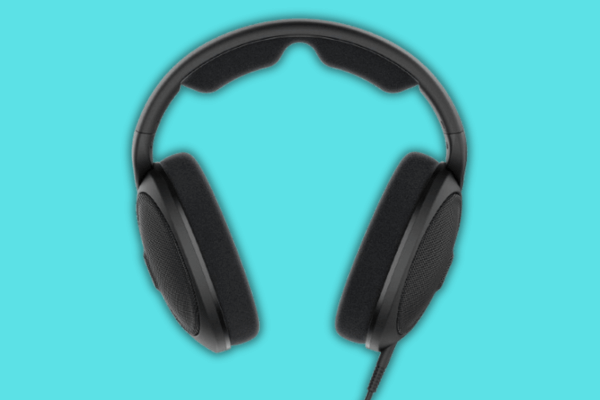
The Sennheiser HD 560S review states that the fit and comfort in relation to the headphones is not the worst. When I used them, I realized that the headphones were really stable on my head even when I made some crazy head movements this is same as Jabra Evolve2 65. The ear cups exert a little bit of clamping pressure so they will not fall off, but don’t feel too tight. Contrasting this, I would like to say that even though the fit is good, these are not the kinds of headphones that you would want to use while working out. These are waning more dubbing and sitting on the couch watching a movie rather than going for a jog.
As for measurements, the HD 560S has a length of 8.5 inches, a width of 6.8 inches and a height of roughly 3.5 inches with a total volume of around 202.30 cubic inches (or approximately 3,315.09 cm³). The weight is easily manageable at 0.54 lbs but you certainly can feel their bulk when stuffing them in a bag. So if portability is at the very top on your list of priorities, then these may not suit you well.
Almost every time portable is mentioned, the sennheiser hd 560 s over-the-ear audiophile headphones heads towards the mountains. What is lacking in portability is easily compensated for with comfort. The headband as well as ear cups comes with enough padding that is soft touching the skin making them suitable for people whose listening periods are long. They are also light in weight and even after having them for several hours did not have excessive pressure on the sides of the head, nor any discomfort. This is particularly crucial if like me you have glasses, the installation remains chic without any extra pressure.
Generally speaking, the main objectives of these headphones are comfort and accuracy during long music sessions. The problems arise from its bulky construction which tends to minimize traveling or engaging in very active activities
Sound Quality
With regard to audio reproduction, Sennheiser HD 560S does not disappoint and that’s why I suspect many people would love it. From my experience, I appreciated the consistency of the sennheiser hd 560 s frequency response throughout the listening session. This sound is similar to Beats Studio Pro and the Beats Solo3’s sound when I tested it. There is a slight difference present in the treble region, but it did not affect the experience in any way. During different sessions too, the sound did not change even due to external factors such as long hair or wearing glasses.
Focusing on the bass first I have to say it is quite accurate though not 100% spot on. The low-frequency response extends to 55.76 Hz, although there exists some deficiency of low bass at -4.34 dB. For instance, if EDM bass and hip hop bass are your preferred genres, you will find out that the expected punch and deep rumble are not completely present. Nevertheless, mid-bass and high bass are both present, with mid-bass at -1.22 dB and high-bass to 0.7 dB where a lot of low end in virtually all tracks and makes it warm without making the mix sound overcooked. If you prefer a lot more thump this may not satisfy you and you should try something like the Sennheiser HD 490 Pro.
This is precisely the area where these headphones excel. Mid-range sounds reproduction accuracy is excellent. Be it low-mid, mid-mid or high-mid, everything is very close to the neutral character. None of the vocals nor lead instruments gets lost in the mix, and textures are rich giving an organic feel of sound. There’s none of that thinness or harshness present in the sound, and even references on instrumentals which are ostentatious in density are preserved clearly, hence this becomes ideal for content that is along vocals and acoustic guitar with instrumental.
Treble performance of the Sennheiser HD 560S is also excellent. Excursions from neutral sound are weak in the low-treble and mid-treble regions that can even be considered sibilance enhancers performing without ear fatiguing harshness, yet detailed sounds of sibilants or cymbals. Attaca also extends the range of the treble, but that is not a big issue. The issues were that when playing back almost every content I heard every spark and sometimes they felt overwhelming. Due to rather poor response in the high-treble, some of this range’s brightness and sparkle is not there, but overall performance in this range is still good. Some time, most of the time rather, I realize when a note gets considerably shrill even if it isn’t too awful, or when a passage featuring a notable bounce hits the cymbal, I notice a surge in the mid-treble region, which was unavoidable.
When it comes to the performance on peaks and dips, this Open-Back Earcups headphone does stand up to the task. There is a slight dip in the high mid-range of the right driver that can result in the diplacement of a few vocals and lead instruments, but no major impact on the occurrence of this stage. The peaks in the low and mid-treble range can also cause some notes to sound slightly over pronounced, but other than that, the frequency response is, in general, good and balanced.
The most impressive characteristic of the HD 560S may be the soundstage. Being open-back, the sound stage is rather wide giving an impression of loudspeakers rather than headphones. It’s not the widest I’ve heard if you’re looking to plug something more extended Audio-Technica ATH-R70x it might be a better option in this regard but the extent of openness is nice as well. The passive soundstage affords a realistic acoustic environment that allows the music to eb and flow gently rather than have to squeeze out energy within cramped yet great boundaries.
Isolation
As for isolation, the Sennheiser HD 560S does not seem to be good like Skullcandy Crusher EVO, but that is inherent with the open-back headphones. Not having an active NC makes them rely on the passive damping, and losings are minimal in that sense. The loudspeaker was reported to have an overall containment of -3.15 dB indicating that there is hardly any region of blockage for external noise. Of course. This goes for the open-back models as well because they are not made to ear away from the surroundings.
From my observation, these headphones allow a very large field of air sound with picker modes sounding like a low grunt from buses or trains to an air conditioner midrange whining. When in a public place deemed being noisy like a coffee shop or an office for that matter, it one way or the other truthfully puts you in a lot of spacious noise and more likely than not this will interfere with your listening experience. Even normal talk or an animated one or the interactive noise level can easily be picked up so if you are thinking about wearing these in public places that activity should be noted.
With regard to the bass category, it’s virtually non-existent, with only 0.22 dB lowered. The charts for the mid-range category are slightly better in this parameter but only about 1.05 dB lowering is achieved and this is insufficient to drown out speech or other sounds. The range which requires the least isolation is the treble range where the value drops to -11.84dB meaning that the listener will definitely pick up even the slightest sounds like whirring fans or any electronic devices cutting in.
These headphones are really sensitive to sound leakage, so leakage values are expected to be high. The general leakage in dB with the headphones 1 foot away from the body is 59.12 dB which together with volume up would guarantee that someone close by would hear music and this is an ideal case scenario. If you are in an empty room or even in a crowded one where your music is on, others are most likely going to hear your tunes which is probably not so good especially for those who are on the go in any public transport.
Not suited for noise isolation or leaking sounds suppression. These headphones make the most effective use when used in limited amount of afnoise within private spaces and no noise leakage on external noise is made. Users who want a noise-free environment while listening to their music, then it is advisable that you look for closed-back headphones or noise-canceling phones.
Battery Life
With regard to battery life, the Sennheiser HD 560S is quite clear – there is none. These headphones are not wireless; they are purely wired type, which negates the use of a battery. There’s no concern about charging them or having your power spent during long listening sessions for the reason that they merely operate on the wired function in place.
Because they do not have a battery, features such as optimal continuous working time, additional rechargeable batteries, and total operative time do not apply. Also, you will not encounter such waiting times as charging the unit or such dreadful technologies as power-saving modes, since there are none. It also does not have a wi-fi capabilities so it is entirely dependable as long as it is connected to a source of electricity.
Since they do not need to be charged, there is no battery; and so long as the headphones are connected to a qualified device, it is business as usual with the headsets. This makes it ideal for people who simply want to connect and listen without being concerned about running out of battery don’t have to worry about carrying charging cords with them.
Those looking for wireless features or a long-lasting battery on this model may be disappointed. On the other hand, for enthusiasts who wish to skip charging up gadgets and still prefer a wired connection, Sennheiser Over-The-Ear Audiophile Headphones provides clear, smooth sound without ever running out of power.
Connectivity and Usability
As for connectivity and usability, the Sennheiser HD 560S takes an easier way out and opts for a wired-only mode. These headphones are attached with cabled audio, which means that there is no delay while listening to music. It will allow you to connect to various audio receivers due to the cable provided which is 1/8 TRS to 1/4 TRS. The retention of the removable cable came in handy as the 10.40 ft (3.17 m) long cable provides ample space to move without being bothered by the cord. This range of cable length should be great for indoor use especially for music lovers as well as large input sources.
There was also a very pleasant surprise in the form of the 1/4 TRS to 1/8 TRS adapter, which lets you plug in to more standard headphone sockets. I have included recordings made using the strap-on microphones whilst listening using the headphone jack and it gave 0.2 mS latency on a PLL locking at a normal little war exceeded. This is especially good for situations that require the two synchronized, such as when laying sound tracks for video or for tape.
These wired headphones do not have any wireless capabilities including an absence of Bluetooth, the ability to connect to several devices or easily hook up to Android or iOS devices. The main aim at this point is just the provision of a good quality wired connection. If that’s what you want with this unit, then try looking for other headphones. There are also no line of sight range or support for codecs such as littering and bcchubc, apt x, and ldac. These functionalities are irrelevant for a wired set up.
Mic Performance and Call Quality
There is no microphone present with these headsets. However, for those who play games on Sennheiser headphones with a mic attached, you can try the Sennheiser/EPOS PC38X.
Durability and Portability
In terms of portability, High-Definition Sennheiser HD 560S is quite low and isn’t the best for travel purposes. When compared with other over-ear headphones, these have a reasonably large belt, with size: Length: 8.5” Width: 6.8” Height: 3.5”. Their general volume of 202.30 in³ (3315.09 cm³) is a bit too much bulk for many, especially if, like most people, you are used to smaller, more easily stored and carried around ‘phones’.
One plus is that the audio cable is detachable, which reduces the likelihood of the audio jack being caught onto some parts when one is operating. However, the ear cups do not swivel flat, and the headband does not fold away, which means these sets have to be carried in a bag on their own. This feature affects their portability, thus they are more suitable for use when stationary, such as at home or in a working studio, rather than when being on the go.
Concerning durability, the Sennheiser Consumer Audio HD 560 S is generally well built, although there are a couple of drawbacks. Nonetheless, the headband and ear cups consist of dense matte plastic, which is solid in feel yet does not add much weight to the headphones. Additions such as detachable cables do contribute to the overall durability of the equipment because you can quite easily change the cable if it is worn out and this goes a long way in extending the use of the equipment. That said, however, the ear cup hinges and yokes tend to be on the weaker side relative to the rest of the structure and might be the first ones to break over time with use.
while the Sennheiser headphones would not be the most portable of headphones due to their bulk, weight and the absence of any foldable parts, how they are built and the fact that there are removable cables should provide a reasonable level of protection that will stand the test of time with proper usage indoors or in a studio.
Final Verdict
The history of Sennheiser is one of the most compelling and the collection of the five-star and Award-winning headphones has a period of more than fifty years. This wired set of open-back over-ears is in fact a worthy addition bearing in mind the perfectionist and providing a sonically acceptable level and detail for budget conscious segments.
However, those buying them as audiophones – as the company claims – will find them performs well but in terms of punch, zeal and enthusiasm, just a tad underdone.

